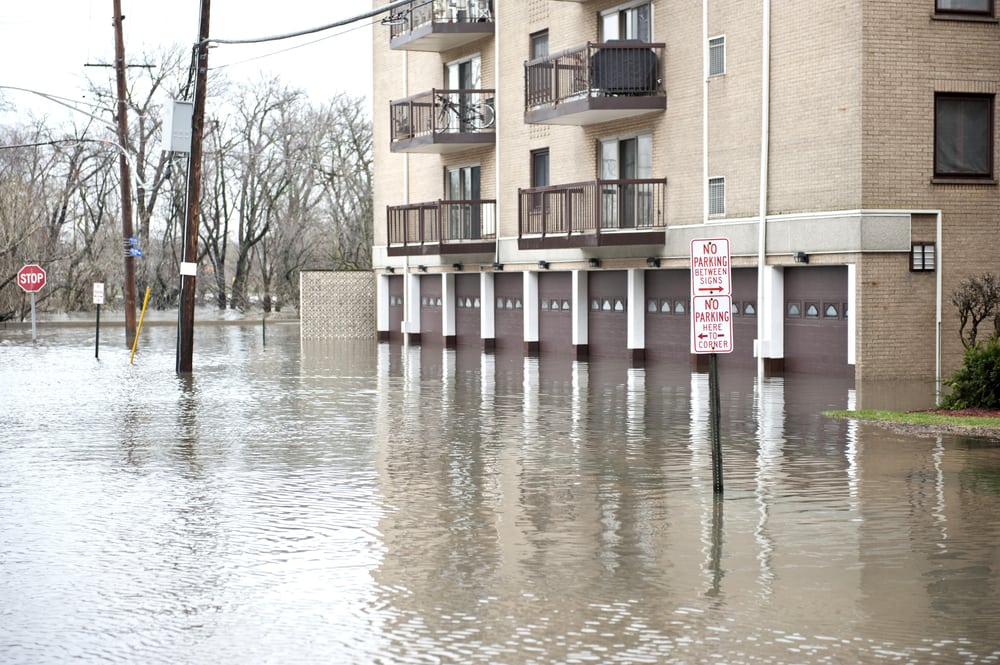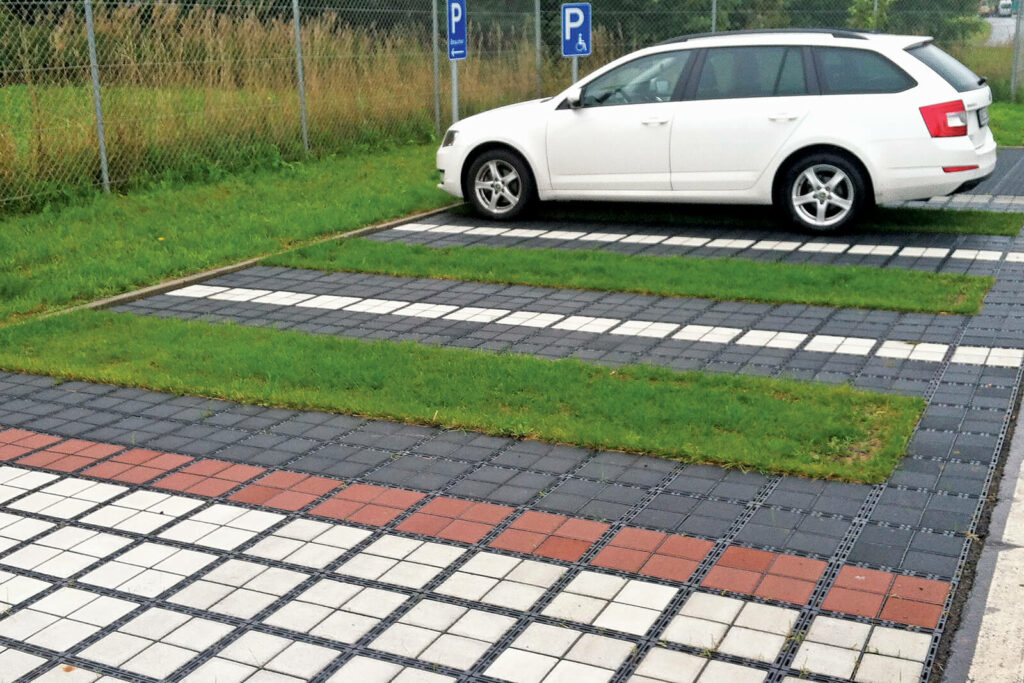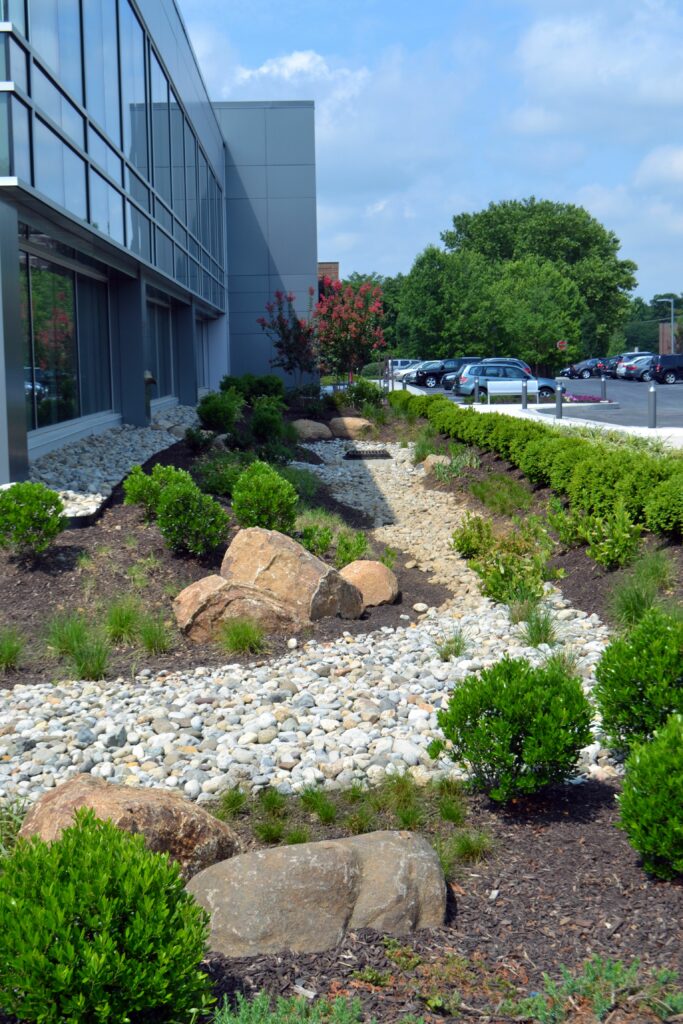Protecting Properties from the Effects of Climate Change through Stormwater Management
Human-induced climate change is not only a result of high greenhouse gas emissions but also the displacement of green infrastructure (e.g., trees, shrubs, wetlands, etc.) in favour of increased hardened surfaces (e.g., pavement). The lack of shade and permeable surfaces has contributed to an increased risk of flooding, pollution, and extreme heat for many areas across the Greater Toronto Area.
One way to address the impacts of a changing climate is through adaptive stormwater management techniques, particularly the use of Green Infrastructure and Low Impact Development.
What is Stormwater Management?

Stormwater management is a way to minimize the impact of pollution entering nearby watercourses from runoff, the strain on stormwater drains and other infrastructure, and the risk of flooding. Stormwater includes both rainwater and melted snow that flows over roads, walkways, parking lots, lawns, and other sites in urban areas.
Traditionally, stormwater has been managed by funneling it away from streets and buildings as quickly and efficiently as possible through storm drains. Unfortunately, when there is heavy rainfall, there is the risk of backflow which may result in flooding. As extreme weather events and increased precipitation affect Southern Ontario, the need for adaptive solutions to how we manage stormwater will become increasingly important.
What is Low Impact Development?
Low Impact Development (LID) practices are being used more frequently to address problems related to urban stormwater runoff including, flooding, erosion, sedimentation, and pollution. In contrast to traditional stormwater management approaches, LID mimics natural water cycles by increasing the infiltration of stormwater into the soil, where it can be filtered into underground aquifers or absorbed by plants. LID is a more cost-effective and adaptive/living alternative to conventional human-made infrastructure (e.g., storm drains), providing a number of ecological, social, and economic benefits.


Benefits of LID include:
- Improved water quality & groundwater recharge
- Reduced number of costly flooding events
- Reduced urban heat island effect
- Increased habitat for pollinators and other wildlife (e.g., birds)
- Enhanced natural beauty
Examples of LID include:
- Rain gardens
- Bioswales
- Infiltration trenches
- Permeable pavement
- Rainwater harvesting
How can Businesses take Advantage of LID Solutions?
Businesses have a role to play in adapting to climate change and can greatly benefit from the implementation of such LID practices. Doing so not only protects investments, but employees, natural systems, and the broader community.
Looking for ways to improve your business’ on-site stormwater management? Contact Chaya Chengappa at chaya.chengappa@trca.ca for more information.

